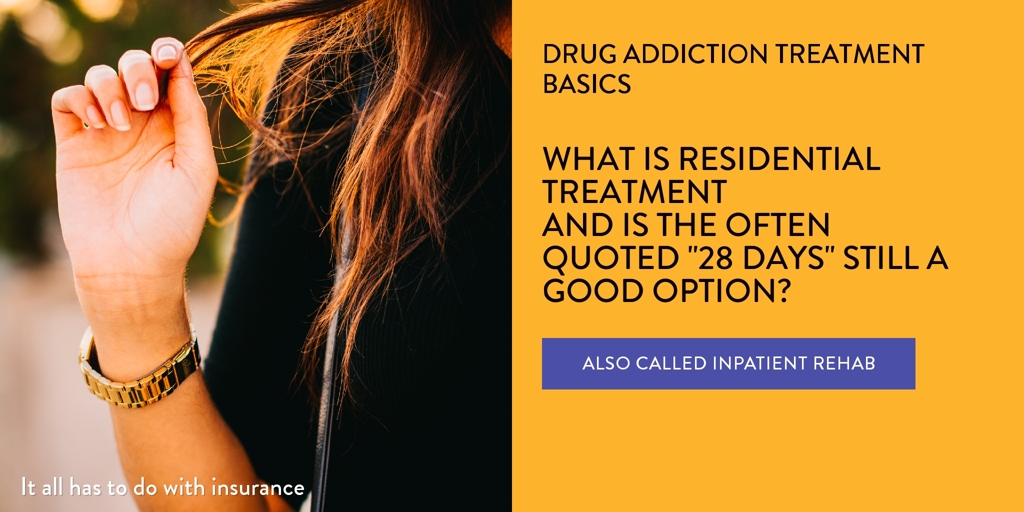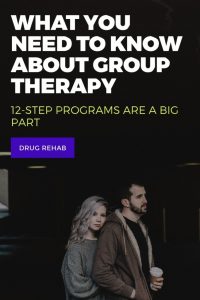Many people are surprised to learn what happens in rehab
You may find this as shocking as I did when I was recently asked by a parent of a prospective 20-year-old client, “What happens in rehab?” The reason I found that question shocking was that with all the thousands and thousands of people I have talked to over the years about getting someone into treatment, no one has ever asked me that question before. I am usually asked the same basic questions like “How do I get my loved one to go to treatment?” “How much does it cost?” “How long is treatment?” and my favorite: “Can I go to the same rehab as my significant other?”.
Rehab life as shown in the media
I assume people have formed their opinion of what happens in rehab from television, movies, family, and friends. I remember the 1988 movie “Clean and Sober” with Michael Keaton and the 2000 movie “28 Days” with Sandra Bullock, which gave a reasonably accurate look into how rehab operated in those years. Now add in the 2008 to 2012 television series Celebrity Rehab and the still running since 2005 television show Intervention I can see how people have concluded what happens in Rehab.

This article is not about the exceptions to the rule; it’s about the rule. Yes, there are “luxury Rehabs” with Golf, Massage, Gourmet Dining, etc., and there are no-cost “state-run” shake and bakes, which I won’t be discussing. They make up only a fraction of the 14,000 estimated treatment centers in the United States.
This article is about the typical JACHO or CARF accredited 30-—to 90-day substance abuse treatment programs, which are paid for mostly by insurance or cost on a cash base between $15,000 and $75,000. It is important to know what to expect from a treatment center to make sure you receive all the help necessary to recover from addiction.
Entering Rehab
Not everyone walks through the front door of rehab some people stumble in. The first thing that will usually happen is a medical professional will take the incoming clients vital signs.
Since most people entering substance abuse treatment are significantly under the influence of various substances, it is essential for the facility to immediately assess a person’s risk. These include seizures, heart attacks, or other medical conditions.
An in-depth medical evaluation will also be done, including blood, urine, and other lab tests. This is done to assess the clients’ drug use, which should be done right away. Once it has been determined by the treatment center’s medical staff that the client is not in any immediate medical danger, an interview will take place.
The Admissions Interview
Don’t be alarmed if when you are checking your loved one into treatment if you are asked to leave the admissions interview. There are several reasons behind this. This first starts with a law called HIPAA (which will come up several times). HIPAA protects patient’s privacy. More importantly, most people checking into treatment have been lying to their loved ones about how much substance they abuse. They’ve also been lying about what kind of drugs they’ve been using.
Out of your presence, they tend to be more honest. A well-trained staff member is versed in all the different combinations of substances and slang used. A professional will get a much better picture of the extent of the addictions with no loved ones around.
What happens in rehab during Detox
The detox process depends on many factors, age, length of time using, what substances have been abused and any health conditions. Typically, substance abuse detox lasts from 5 to 10 days, depending on those factors.
Medicated detox offers a variety of medications to ease discomfort while a person is withdrawing. If you were hoping to talk to your loved one while they are in detox don’t be alarmed if the facility doesn’t allow it. Most treatment facilities will not allow their clients to make or receive phone calls during this phase of treatment.

Orientation
There are rules in a treatment center that must be followed. There are rules governing your conduct and acceptable and unacceptable behavior. You should be explained all the rules and in many cases, you will sign a piece of paper that you agree to abide by the rules. There should be a list of consequences for breaking rules and typically the consequences get more severe for each violation. You can get kicked out of treatment for breaking rules like harming another patient, attempting to bring banned substances into the facility, or relapsing when you are allowed on an outing. Every facility has different rules, so find out what is allowed and what is not allowed.
What is Residential Treatment?
In the pioneering days of treatment, most substance abuse treatment was performed in a large hospital. These were medical complexes, and the treatment lasted four weeks or 28 days.
That type of short-term treatment is known as “spin dry’s”. The first 10 days, you are detoxing and getting all of the substances out of your body, and in the next 18 days, you are crammed full of knowledge. You’re taught about addiction, attend groups, meet with counselors, therapists, and Dr.s and out you go.
This was a very profitable model for hospitals because the rates they could bill per day were significantly high. However, after 28 days of that high-cost treatment, most insurance companies would not pay for any additional treatment. It naturally follows that after 28 days the treatment was ended.
Today, most treatment professionals believe the longer a person stays in treatment, the higher their chances are of maintaining long-term sobriety.
The Myth of the 28-day Treatment Model
Around 2008, the treatment industry realized that the “one-size fits all” 28-day model was not sufficient. Despite the large number of drug rehab admits, there was still a growing number of people suffering from addiction.
They created the “90-day Residential Model”. So instead of cramming sobriety down a person’s throat in 18-28 days, the new models were a 60 to 90 day or even longer plan. Like all businesses (and treatment is a business) there had to be a way to spread the cost of treatment over 90 days.
So basically, the new model charged insurance companies the same for 90 days as the hospitals were charging for 28 days. The way they did this was by reducing fixed costs associated with providing treatment in a hospital setting and spreading out over time the expensive therapy-related costs. Allowing clients to process for several days what they learned in a counseling session rather than back-to-back 18 days of cramming is more effective, and it is also cost-effective.
Modern Addiction Care
As part of the new residential treatment model, clients stay in actual homes. An average treatment center buys or leases several nice homes next to each other and typically would put two people in a room and have a live-in staff member in a room of their own. This would create a 12-24 person residential treatment complex.
Close to the residential homes is an actual office facility where group therapy, individual counseling, psychotherapy, and addiction education are performed. Activities are added. For example, exercise is an important part of nourishing a body and getting it back to health. Most treatment centers either have their own exercise and yoga facility or contract with a location nearby. Nutritious meals are typically served at the treatment office or both the office and the residences. Eating together in a group is part of the recovery process.
Sample Daily Rehab Schedule
After a person has detoxed, they can enter residential care. The days in residential care are very structured. Below is a typical daily schedule:
7:00 A.M Wake, Make Bed, Meditation
8:00 A.M Breakfast
9:00 A.M. to 10:00 A.M Group Therapy
10:15 A.M to 11:30 A.M Group Therapy
12:00 A.M. to 1:00 P.M Outside 12 step meeting
1:30 P.M. to 2:15 P.M. Lunch
2:15 P.M. to 3:15 Individual time with counselors
3:15 P.M to 5:00 P.M Gym
5:00 P.M. to 6:00 P.M. Personal time
6:00 to 7:00 P.M. Dinner
7:30 to 9:00 P.M. 12 step meeting time
9:30 to 10:30 P.M. Personal Time
11:00 P.M. Lights out
Morning Discipline
If the following seems like treatment centers are treating people in treatment like children, it is because they are. When a person has been abusing substances for a long time, old habits have to be broken and new ones formed. When a person wakes up in the morning, the day begins to formulate. Addicts tended to come to rather than wake up, especially on days they did not have to be somewhere at a given time. This is the first habit to be torn down and rebuilt with a consistent morning routine.

In treatment, the first schedule that will be kept will be the time a person must wake up and stay awake for the remainder of the day. By getting up at the same time each morning eventually the client will be able to fall asleep at the same time each evening.
Tasks as simple as making your own bed in the morning have a psychological reasoning behind them. First, it is taking care of yourself rather than relying on another person to take care of you, and secondly, it closes the door on climbing back into bed when you don’t want to face the day. Just basic hygiene like showering and getting dressed on a schedule has been ignored when someone is in the throes of addiction. In treatment, a morning routine will be developed, which includes some reading of sobriety books and meditation to clear the mind of any negative thoughts a person may wake up with. Instead of waking up in dread like many substance abusers do, having to face the consequences of living an addicted life in a treatment center, they will wake up with tools to enjoy the day ahead.
Addiction Education
Educating people in treatment about the disease concept of addiction plays an important role in recovery. People suffering from addictions are not bad people. They are sick people who need to get well. Most people enter substance abuse treatment and have no concept of how or why their minds and bodies react differently from people without the addictive gene. Addiction is a disease that centers in the mind and body. People with substance abuse issues need to be explained how and why their minds and bodies react differently to chemical substances. Clients in rehab will spend time in groups being taught about addiction and will engage in exercises aimed at exploring when their addiction started and how it progressed over the years.

This process will likely include the client writing down specifics where they’re using escalated from getting a little high to losing control and bad things happening. They will be asked to review how their using didn’t just hurt themselves but how their using caused harm to everyone that loved them and trusted them. People in the throes of addiction often use the expression “I am only hurting myself,” and they say it so much they convince themselves of it. In treatment, clients will make a list of everyone they harmed which they will later need to make amends to. Part of understanding addiction is breaking denial, denial you have a problem, and denial that you haven’t hurt anyone else.
Group Therapy
Group therapy is an important part of any treatment program and several hours a day are spent in group therapy sessions. Topics of each group therapy session are rotated. Each hourly group therapy session will be led by different staff members of the treatment center.
Topics in group therapy typically include something around psychoeducational principles. A psychoeducational group is a specific type of group therapy that focuses on educating patients about their disorders and ways of coping. It’s based on the principles of cognitive behavior therapy.
Another topic might teach about substance abuse. In this session, you might learn how to rearrange patterns of thinking and actions. These are actions that lead to addictions. It’s important to identify substance abuse triggers, anger, and stress management. Other group sessions might discuss conquering depression, family dynamics, setting boundaries, healthy relationships, fears, emotions, trauma, and relapse prevention.
Group Therapy and Addiction Support Groups
Most treatment centers’ goals are to introduce their clients to 12-step substance abuse support groups for their long-term recovery. Depending on the specific substances clients abused prior to treatment, clients will most likely be taken to 12-step support groups like Alcoholics Anonymous, Narcotics Anonymous, Heroin Anonymous, and Cocaine Anonymous as part of their treatment regimen.
In treatment, many clients are in introduced to group therapy for the first time in their lives. Something happens in group therapy that is magical whereas the commonality of similar life struggles that each client has gone through creating unique bonds and the desire for the first time to help another human being.

The Group Therapy dynamic encourages clients to foster hope and examine core issues that exacerbate their addictions. Clients will develop new communication skills and learn to engage in fun, healthy social experiences. The group dynamic encourages honest feedback and facilitates bonding between individuals with shared experiences. Clients weigh in on the issues of others in order to offer their experience, strength, and hopefully providing outside perspectives. This process broadens the individual’s understanding of conflict and conflict resolution.
Additional Group Therapy Goals
Other goals of group therapy include gaining inspiration through the recovery of others. Participants in group therapy support and nurture each other by reinforcing good behaviors and helping each other cope with difficult tasks. They add structure to chaotic lives and provide a safe environment in which to practice newly developed skills.
What Happens in Rehab During Meal Time
Eating healthy is not even a thought to many people during their addictions. Alcoholics drink a phonemical amount of calories, and substance abusers either overeat or don’t eat regularly, so in treatment, this all has to be addressed. Again, here we go back to I know it seems like treatment centers are treating their clients like children; however, it is only the clients that have been acting like children by not eating properly that need to be retrained on how and when to eat right.

Nutritional balance can have a positive effect on some of the symptoms of withdrawal. Good eating habits and nutrition during treatment can result in higher levels of focus and retention of information during treatment and therapy, which in turn can contribute to more positive outcomes in the treatment process. For these reasons, treatment programs incorporate nutritional planning into the daily schedule, helping to provide the support of balanced, scheduled, and satisfying meals that improve treatment outcomes for those in rehab.
Having meals in a group setting has therapeutic qualities. It gives the participants a chance to be together informally as a group. Instead of dealing with emotional traumas and other intense topics that go on in group meal time tends to be bonding and valuable friendships are made. The goal here is to break down bad habits and build new, healthy ones.
Psychiatric and Medication Management
Many people entering treatment also have an untreated mental health issue, which is known as Dual Diagnosis or Co-Occurring Disorders—these range from depression, anxiety, PTSD, Bipolar Disorder, Borderline personality disorder, etc. During treatment, clients will meet with a variety of medical professionals to determine if they have any co-occurring mental health disorders. Some of these disorders are a chemical imbalance and may be treated with medications and therapy. Typically, a doctor may have to try several medications and monitor the medication levels until the proper level of medication is reached. During the medical evaluation and stabilization, the client will also be getting psychological therapy from a medical professional. Years of living with a chemical imbalance and years of substance abuse and the trauma that is typically associated with substance abuse require intense treatment.
Many people who suffer mental health issues prior to coming to treatment have been self-medicating for a long time. Some have never been diagnosed by a proper medical professional, whereas others have been diagnosed and chose to stop taking the medication they have been prescribed. One of the benefits of being in a substance abuse treatment facility that treats Dual Diagnosis is that the client will be monitored so that they are only taking the prescribed medications at the prescribed time and the prescribed amount. This may be the first time in a person’s life that they actually receive proper psychological evaluation and treatment.
What Happens in Rehab with Individual Therapy
Unlike group therapy, where clients share openly in front of their peers, individual addiction therapy is for more severe issues that clients share with their counselor only. Individual therapy (sometimes called “psychotherapy” or “counseling”) is a process through which clients work one-on-one with a trained therapist—in a safe, caring, and confidential environment—to explore their fears, feelings, beliefs, or behaviors, work through challenging or traumatic memories and identify aspects of their lives they need help with. Individual addiction therapy is focused on finding the root causes behind the reason a person picks up their substance of choice.
Exercise
Exercise is an important component of treatment. Many people in the throes of their addictions neglect their daily health, wreaking chaos on their physical body and emotional well-being. It is important to repair the physical damage of prolonged substance abuse as well as the emotional damage. Your body releases natural endorphins when you exercise which creates for the first time in a long while a natural feeling of wellness.
When you abuse chemical substances, they also cause your body to release endorphins; however, those chemically induced endorphins are short-lived and create a depressive feeling when they wear off. Physical exercise during substance abuse treatment will reintroduce natural levels of endorphins into your body. Not only does this make a person feel better, but it also retrains the body, allowing it to create and regulate the release of endorphins, helping the brain chemistry enhance a healthy mood in natural ways. For the people that haven’t worked out on a regular basis in the last few years, the progress they feel in exercise is amazing in a short period of time.

Free Time
Typically, there are 1-2 hours of unscheduled free time on any given day that someone is in treatment. Free time is not necessarily free though and treatment is not a vacation, in fact, every waking hour of the day someone is in a treatment center they will be busy. During the treatment process, clients will have to do 12-step work, which involves reading and writing. The reading part is easy, it is the writing part is tricky. During free time, clients will also do their chores at the facility, as well as personal things like laundry. Somewhere in those 1-2 hours of free time, a person in treatment may get a moment to relax, but that is all the true free time there is.
Outings
Once clients have been in treatment for approximately 30 days they will be rewarded for their progress with an occasional outing to a movie, beach, parks, hiking or other outdoor activity. These outings are usually optional, however, they are a great way for clients to socialize and experience life sober in the outside world. The outings also allow them to enjoy the serenity and calming effects of nature. These outings are closely monitored and not published to protect clients.
12 Step Indoctrination
The end goal of most treatment centers is to have their clients leave treatment with a treatment plan to maintain long-term sobriety. In treatment, clients are indoctrinated into one or more 12-step groups like AA or NA, etc. These support groups are key to the client’s successful reentry into daily living. They learn how to find meetings wherever they are in the world and the proper etiquette for attending them. Most likely, in treatment, clients will begin working the 12 steps of these programs. Upon leaving treatment, the client should have a 12-step meeting schedule in his or her hometown and phone numbers to call local groups. This allows the person leaving treatment to quickly build a support group in their hometown.
Medical Referrals
In treatment, the client will have met with medical professionals who will also have a post-treatment plan in place. Whether it’s a referral to a local psychiatrist, therapist or other medical professional this should be set up before the client finishes treatment. If a client is put on medication in treatment for a mental health issue a referral to a doctor in the clients’ hometown should be set up to make sure there is no lapse in medical treatment and medication management.
Contacting My Loved One While in Rehab
As you know, the life of someone abusing chemical substances sucks the life out of everyone that loves them. There is constantly worrying about what might happen to them when they are using and their unknown whereabouts. There are those dreadful phone calls requesting money, explosive behavior, or frustration trying to reach them. People who have loved ones in treatment go through a kind of withdrawal process of their own when their loved one checks into rehab. All of a sudden, they are at peace, not worrying about what their loved one is doing, and it is a shock to their system. Some relish the peace and don’t have a second thought, and others worry about what is happening in treatment.
The first seven to fourteen days do not be surprised if you do not hear from your loved ones at all. Typically no calls are allowed when a person is in detoxification. If you think your loved one behave erratically when abusing substances when detoxing from those substances they may be more erratic. No good can come from a call to or from a person in detox. After detox typically clients start to earn phone privileges.
HIPAA is a privacy regulation that will not allow a treatment center to release any information about a patient without the prior written permission of the person in treatment. Some clients will sign this form and allow information to be released, but others will not.
Defiance and Addiction Go Together
If your loved one didn’t or won’t sign it, the best thing you can do is wait until they call and ask you for something. There typically is something that comes up when someone is in treatment, such as needing help from a loved one, and that is the best time to bring that up. Also, being patient helps. The longer your loved one is in treatment, the more rational they become and realize that depriving you of that information is wrong. This is a “sign” that treatment is working.
You know what is going on, and your input is not helpful. You have been at their treatment center up until now. You have exhausted every way you know to try and get your loved one clean and sober. Please let the treatment center do its job.
Support Group for the Family of Alcoholics and Drug Addicts
There is a support group for family members of alcoholics and drug addicts that I strongly recommend. It is called Al-Anon. It is free, and I strongly recommend it. There, you will find people just like you learning how to better their quality of life when they have a loved one in active substance abuse. Their website is www.Al-Anon.org
[box type=”note” size=”large”]Do you have a question for the author? Simply type your information in the chat box below. You will receive a response within 24 hours.
About the Author
Bruce Berman personally has assisted several hundred people in treatment for alcohol, substance abuse, and dual diagnosis. He has maintained continuous recovery from various addictions since September 1989. Besides himself, he has placed his own children, employees, family members, friends, and other loved ones into various treatment programs. Whether you are struggling with addiction or a loved one is most likely the author has dealt with a similar situation in the past. Bruce is a father of four children ages 16 to 39 and happily married to his wife Victoria, who has also been in recovery since November 1995. Together Bruce and Victoria run 800 Recovery Hub a company that specializes in placing people in need of treatment into the best treatment center they can.
DISCLOSURE
Bruce Berman is not a medical doctor, holds no degrees or licensees in addiction and has no formal education in treating addiction. He relies solely on his personal experience gained in attending and participating in over 10,000 hours in various 12 step meetings since 1989 as well as the experience he has working with addicts and their families since 1989.
SaveSave
SaveSave
SaveSave
SaveSave
SaveSave
SaveSave
SaveSaveSaveSave
SaveSave
SaveSave
SaveSave
SaveSave
SaveSave
SaveSave
SaveSave
SaveSave
